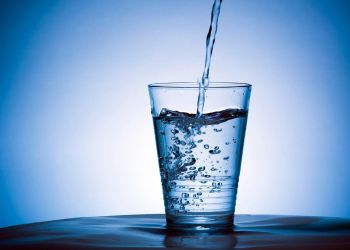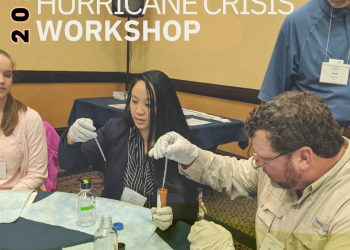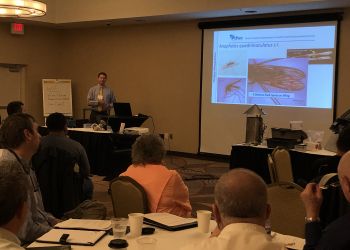
A sociologist, educator, and writer, Dr. Adelle Monteblanco (photo, left) is an Assistant Professor in the Department of Sociology and Anthropology at Middle Tennessee State University. She earned her doctoral degree from the Department of Sociology at the University of Colorado Boulder and completed postdoctoral training at the University of Texas at El Paso. Adelle studies inequality at the critical nexus of health, gender, and environment. She uses qualitative and quantitative research methods to study three areas of focus: solutions to the social vulnerability exacerbated by disasters, maternal health, and the scholarship of teaching and learning. When she isn’t teaching or writing, you can find Adelle enjoying Tennessee’s outdoor playground. She can be reached at: [email protected].
Pregnant people have been largely invisible in efforts to better manage harm to human health from the increasing number of hotter-than-usual days and nights, and worsening heat waves across U.S. cities and counties. They are largely absent from climate change plans, heat advisories, and department of health outreach efforts in hot spells.
This is a problem. A growing body of epidemiological research shows that exposure to high temperatures during pregnancy is linked to an increased risk of adverse birth outcomes including preterm birth, low birth weight, and still birth. For example, nine out of ten articles included in a recent review paper published in the Journal of the American Medical Association “found a significant association between exposure to heat during pregnancy and adverse birth outcomes.” Four studies identified a range of increased risk of preterm birth because of heat from 8.6 percent to 21.0 percent, and two of these found a higher risk for Black mothers.
All the studies were of the U.S. population, but these findings echo other studies in many different countries.
In addition, we have known for decades that pregnant people are more vulnerable to heat stress because of hormonal and other changes that impact thermoregulation. This is especially dangerous for pregnant people working in the heat; for example, about a fifth of farmworkers in the U.S. are female and mostly of reproductive age.
The science continues to gather momentum, but biometeorologist Dr. Jennifer Vanos and I have found that knowledge of the impact of heat on pregnancy health is limited. With few exceptions, birth workers that we worked with in El Paso, TX, during a trial training on the subject, did not know that an increased body temperature associated with exposure to extreme heat could be dangerous to the clients they serve.
Interventions like these simple and low-cost training and materials, including a urine color chart to help identify dehydration, and a rack card of simple messages about heat and pregnancy health, are increasingly urgent.
Temperatures will rise even if the world cuts carbon emissions immediately, and will rise drastically if we stay on our current path. New research suggests that the death rates and economic costs of more common and intense heat waves are much higher than we previously thought.
In the U.S., we cannot afford the additional pressure on preterm birth that increasing temperatures present. We must act on this front. Preterm births are on the rise. Prematurity is a major cause of infant death; and for those that do survive, prematurity increases the risk of lifelong physical and mental health problems. Preterm births are expensive for families and rack up $26.2 billion to U.S. healthcare costs every year.
There is only one way to address this increasingly urgent public health problem that makes sense, and that’s through reproductive justice. As defined by SisterSong, reproductive justice is “the human right to maintain personal bodily autonomy, have children, not have children, and parent the children we have in safe and sustainable communities.”

“Preterm rates in Black women are 50 percent higher than for white women, and low birth weight and still birth rates are similarly higher. This is because of the mechanisms by which racism shapes health, including access and quality of care.”
– Dr. Adelle Monteblanco
Preterm rates in Black women are 50 percent higher than for white women, and low birth weight and still birth rates are similarly higher. This is because of the mechanisms by which racism shapes health, including access and quality of care. Systemic racism is also the root cause of why Black neighborhoods in cities all over the U.S. are hotter than white ones. Black families are also less likely to be able to run air conditioning in well-insulated, good-quality housing without worrying about energy bills.
Birth workers, and health workers more broadly, cannot fully take on the intertwined burden of climate and racism crises that they and their patients did not create. Addressing the increase in dangerously hot days in the U.S., for example, is inherently a multi-sectoral task. Cooler cities and safer rural areas will be the result of combined efforts from a diversity of climate resilience experts – engineers, urban planners, architects, and interdisciplinary scholars.
Health workers also have a key role to play: providing intervention in the trenches through increasing the knowledge of pregnant people and their families about the impact of heat, and the importance of hydrating and staying cool. After all, health workers are trusted with adopting many roles: the medical expert, the communications specialist, and the health advocate.
Some suggested initial steps for health workers could include:
- Identifying and introducing yourself to new community partners, including doulas, midwives, and lactation counselors and consultants. Like you, they are invested in maintaining healthy families and a thriving environment. Collaboration will be necessary to effectively prepare for the increasing natural hazards that accompany the climate crisis.
- Adapting and integrating maternal health and heat outreach materials into your maternal and child health service centers. This link offers a few materials that my colleagues and I have created and field tested, as well as links to materials created by leading health organizations.
- Promoting heat protective measures among this vulnerable group, i.e., pregnant people. This requires special attention to outdoor workers and others that work in settings with high temperatures, like certain warehouses. In your own health training and local leadership, you have likely seen that your constituents get “windows” of motivation for change; during pregnancy, individuals are more open to lifestyle changes that promote health, and so, we can more effectively promote heat safety and hydration.
- Embedding more climate crisis, environmental health, and extreme events-related curriculum into your public health training.
The key point now is that local health authorities should start looking for ways to support this at-risk group.






